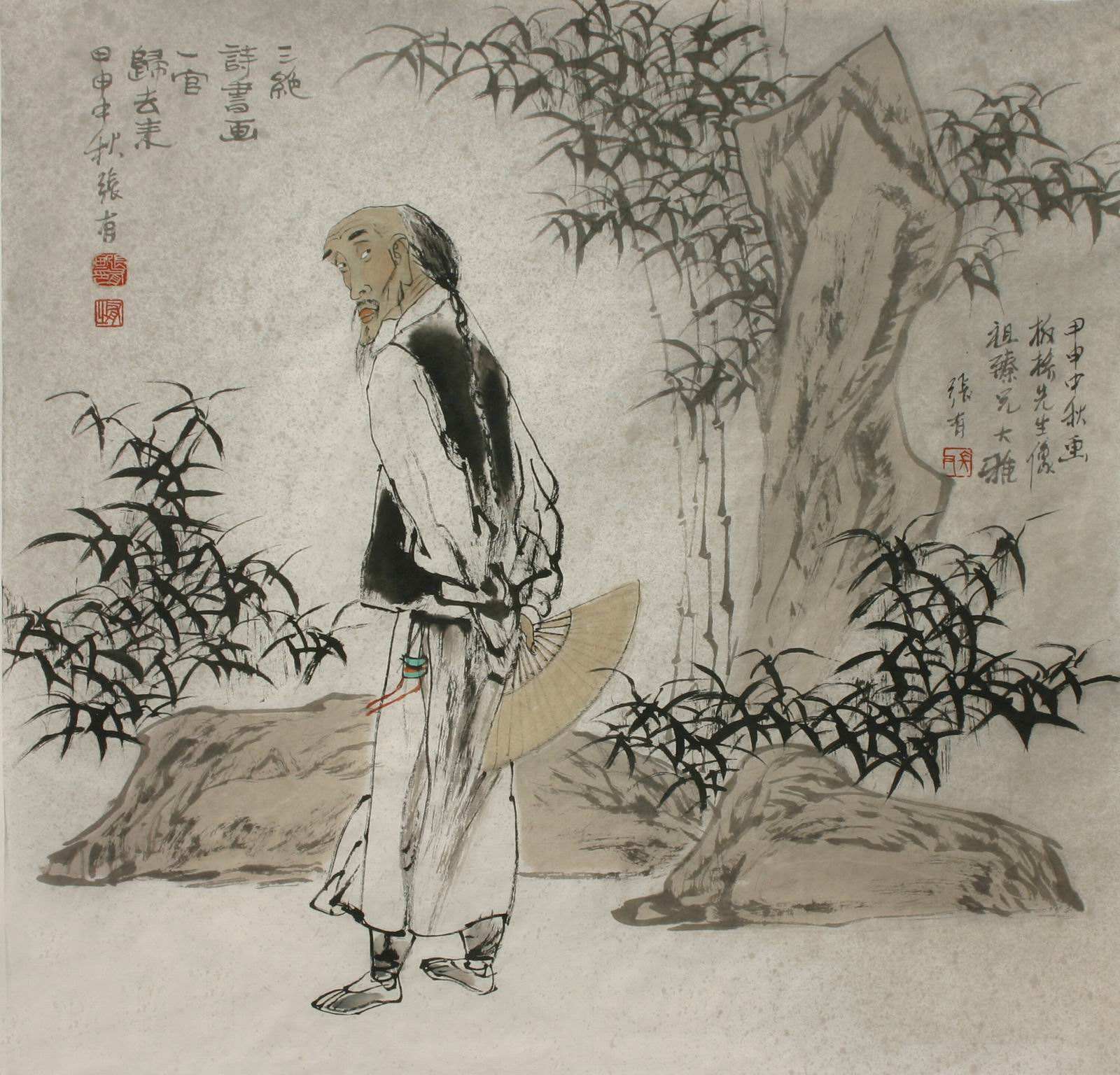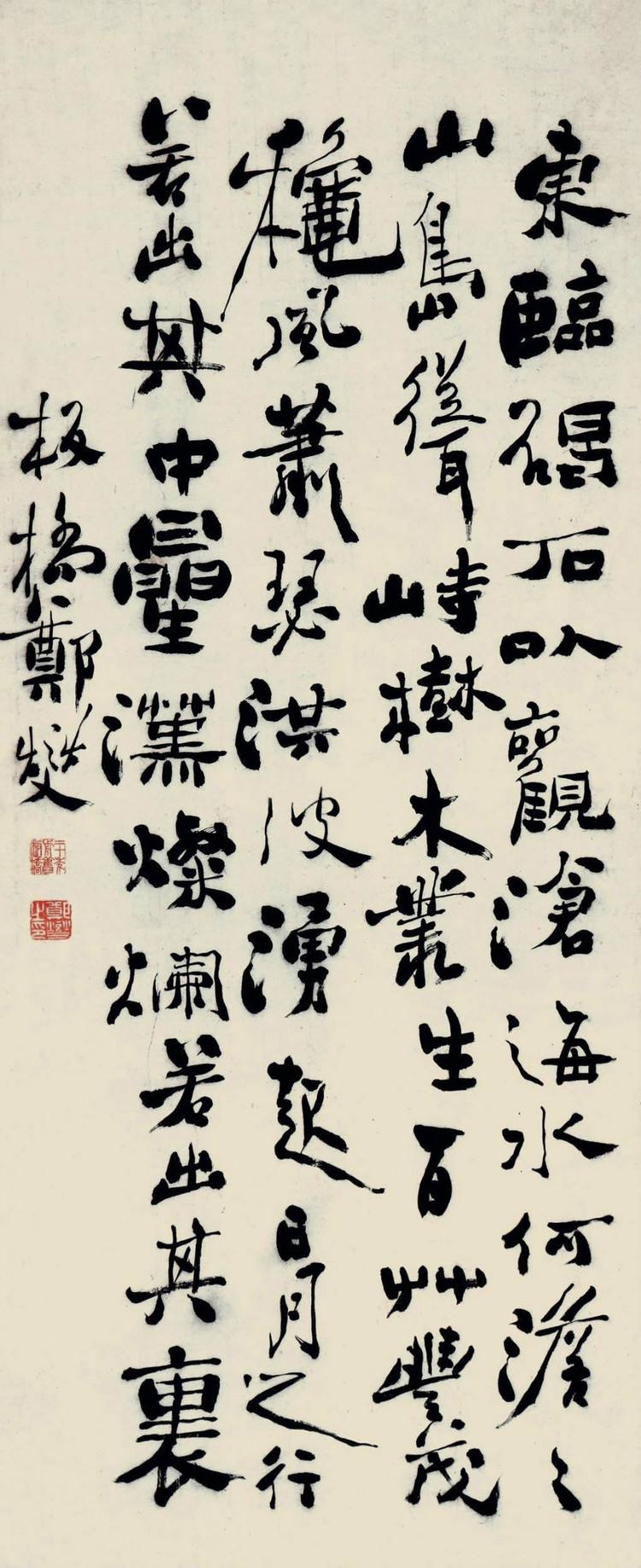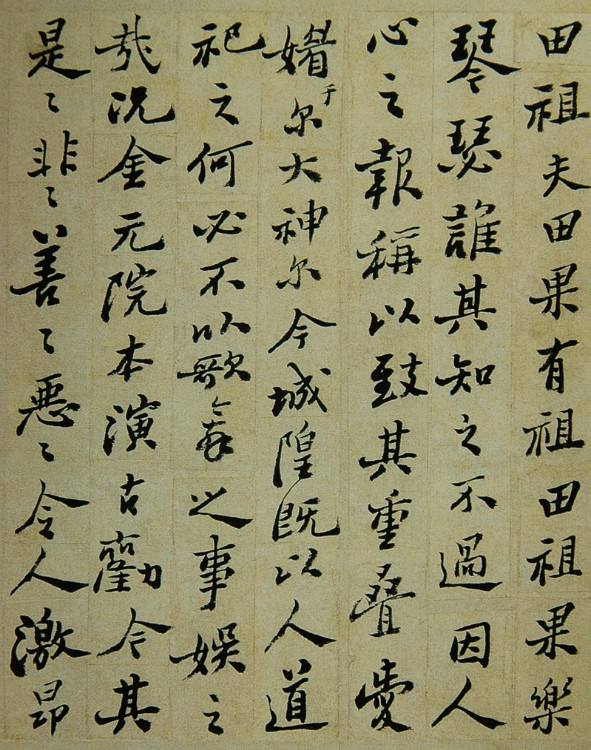
I lay down late at night and listened to the rustling rain, which sounded like the sounds of suffering among the people. These little officials in Caozhou County are always concerned about each branch and leaf. The author of this poem is the "weird among the weird" among the "Eight Weird People of Yangzhou". He is exactly the unique character I want to show you today - Zheng Xie and Zheng Banqiao.

Zheng Banqiao, whose name was Zheng Xie, whose courtesy name was Kerou, and whose nickname was Banqiao, was known as Zheng Banqiao. He was a native of Xinghua County, Jiangsu Province today. His main activities were in the mid-Qing Dynasty. His life was full of difficulties, his official career was bumpy, and his later life was miserable. During his official career, he experienced the three dynasties of Kangxi, Yongzheng, and Qianlong. His official career was relatively bumpy. Looking at his resume, he never filled any official vacancies. Qianlong resigned in the 18th year of his reign. At that time, he met Huang Shen, Li Fangying and others and made a living selling paintings in Yangzhou. These people were called the "Yangzhou Painting School" and the "Eight Eccentrics of Yangzhou" at that time. After falling ill at the age of 73, he died of depression in extremely difficult circumstances at the age of 73.

What attracted me most was about something Zheng Banqiao did when he was the county magistrate. Historical records: "When (Zheng) was an official in Wei County, the years were poor and people were eating each other. Xie built a lot of buildings and recruited hungry people from far and near to work and eat..." The general idea is: During (Zheng Xie)'s official tenure, a great famine occurred. Even cannibalism occurred. Zheng Banqiao opened a warehouse to provide disaster relief regardless of the consequences. Someone persuaded him to declare it immediately before relieving the victims. He said: "When did this happen? By the time the declaration was submitted, all the people would be dead! I will bear any crime." He said They don’t understand that “responsibility to the superiors” in officialdom is far more important than “responsibility to the subordinates”.

Zheng Banqiao has made great achievements in calligraphy and painting. He pioneered "Banqiao style" and "six-and-a-half style" in calligraphy. In painting, he is especially good at painting bamboo. "Biographies of the History of the Qing Dynasty" records: "Calligraphy and painting are of real interest. I worked in regular script in the early years, and mixed with official seal script in the later years. I sometimes used painting techniques." He was good at writing poems. The beginning of the article was written when he was a county magistrate. He had a preference for orchids and bamboos. Therefore, he was also very interested in painting. At that time, people called him "Zheng Qian's Three Wonders". "The weirdest among weirdos" is his unique title among the "Eight Weirdnesses of Yangzhou". Zheng Xie resigned from his post and returned to the south in his later years, where he became a leader in Jiangsu and his artistic style was once popular. Today we will talk about the reasons for the creation of Zheng Xie's "Six and a Half Minutes Book" and its aesthetic value.

"Fenshu" is the official script, which is also called "Bafenshu". Zheng Banqiao's dividing script means that not only official script is used in the entire work, but also regular script is mixed in, so that different font shapes appear in the calligraphy works. The number of official script is often more than running script, "eight divided script"Subtract a little and add some regular script, which is "six and a half books". Zheng Banqiao was not only good at poetry, calligraphy and painting, but more importantly, he was deeply influenced by literati paintings. In addition, he once said that when studying the calligraphy of Shan Tao, one should learn half of it and discard the other half. Therefore, this created a unique calligraphy style for him. lay the foundation. Therefore, he incorporated the brushwork of painting bamboo and orchid into his calligraphy creation, forming Zheng's unique font style. And this style of writing is called "Banqiao style". Zheng Banqiao continued to explore the emergence and formation of this calligraphy style, and then gradually matured it, rather than doing it haphazardly and picking up the pen at will.

He "worked less on regular script, later mixed seal script and official script, and sometimes used painting techniques", and he put in a lot of effort. Although this unique form of calligraphy was popular for a while and attracted both praise and criticism, it was also criticized. Today we look at how strange Zheng Banqiao's calligraphy is, thinking that he has no formal calligraphy training and is purely entertaining himself, so let's take a look at its origins.

There is no doubt that Zheng Banqiao's official career was rather bumpy. In the article on "Guange Style" we mentioned before, we have pointed out that it is absolutely impossible for a literati to succeed in officialdom without writing good "Guange Style". Zheng Banqiao was at the historical stage when the "Guange style" was prevalent. Naturally, he is also extremely familiar with the "Guange style", and has basic skills in brushstrokes and profound skills in regular script. "The True Works of Si Zi Shu" was written by Zheng Banqiao. Its preface says: "Banqiao neither has the strength of Fu Weng (Huang Valley) nor the smoothness and familiarity of Shi Songxue (Zhao Mengfu). He is just reserved and strange, and founded Zhen Li Xiang Shen. The method is mixed with running grass, and the teacher's intention is to use it for his own use, which is insignificant." Also in "Liu Liu Village Booklet", he described his calligraphy style and said: "Zhuang Sheng said: 'When a roc flies in anger, its wings are like drooping. Clouds of the sky'.

The ancients also said: "The grass and trees grow in anger." But how can everything be free from anger? Banqiao calligraphy uses Han Bafen mixed with Li Xingcao. "The "Seat Poster" by Yan Lugong was used as a deed, which also means being angry with others." This shows that Zheng Banqiao's artistic creative spirit and distinctive personality are not conventional and dare to innovate. Zheng Banqiao's official career was bumpy throughout his life, and he had the ability to "break free" It is not surprising that he was able to create this unique calligraphy art form with his unique personality of "Guange style" and his skills as a literati.

Zheng Banqiao's "Six-and-a-half-point Book" was a very intense reform thought at that time. From the perspective of Kang Youwei, who distorted the teachings of Confucius and Mencius to achieve the purpose of reform, Zheng Banqiao's innovative behavior in breaking away from the shackles of the government system is worthy of recognition, but He also indirectly made the comment that he has "changed" but "doesn't know how to change." Qin Zuyong once commented that "it is too exaggerated and has no subtlety". These are all negatives about Zheng Banqiao's calligraphy. However, if you don't know how to read seal script and regular script, you won't be able to appreciate the charm of Zheng's calligraphy. Observing his calligraphy works, we can see that their shapes are mainly square, with alternating flat and long shapes with a slight twist. His brushwork has strong official meaning, both seal script and regular script. It is simple, vigorous, and interesting in nature.

In terms of composition, Banqiao's calligraphy is like a "street paved with rocks". Regardless of the size of the fonts, fat or thin, they can be well-proportioned. Although it is uninhibited, it contains rules. It seems to be free and easy, but it is full of rhythm. Each word may look like official script or cursive regular script. It looks mixed and disorderly, but when viewed as a whole, it is jumping and agile, well-proportioned and integrated. Due to the prevalence of "slickness" and "kitsch" in calligraphy circles in the Qing Dynasty, the reform and innovation of the "six and a half" calligraphy played a great role in stirring up and promoting the development of calligraphy art at that time. Jin Nong, the core figure of the Eight Eccentrics of Yangzhou, praised: "Banqiao, a Xinghua Zheng Jinshi, is elegant and elegant. He is very famous for his book titles, wild and ancient grass, every word, and all the wonderful features." Banqiao's poem "Gift to Pan Tonggang" "Professed: "My Cao pen array is filled with clouds and smoke, sweeping away the clouds and covering the blue sky. I write numbers in one line and two lines, and the stars are arranged in the south and north."
Articles are uploaded by users and are for non-commercial browsing only. Posted by: Lomu, please indicate the source: https://www.daogebangong.com/en/articles/detail/qing-dai-shu-tan-de-yi-sheng-jing-lei-qie-kan-luan-shi-pu-jie-de-ban-qiao-ti.html

 支付宝扫一扫
支付宝扫一扫 
评论列表(196条)
测试